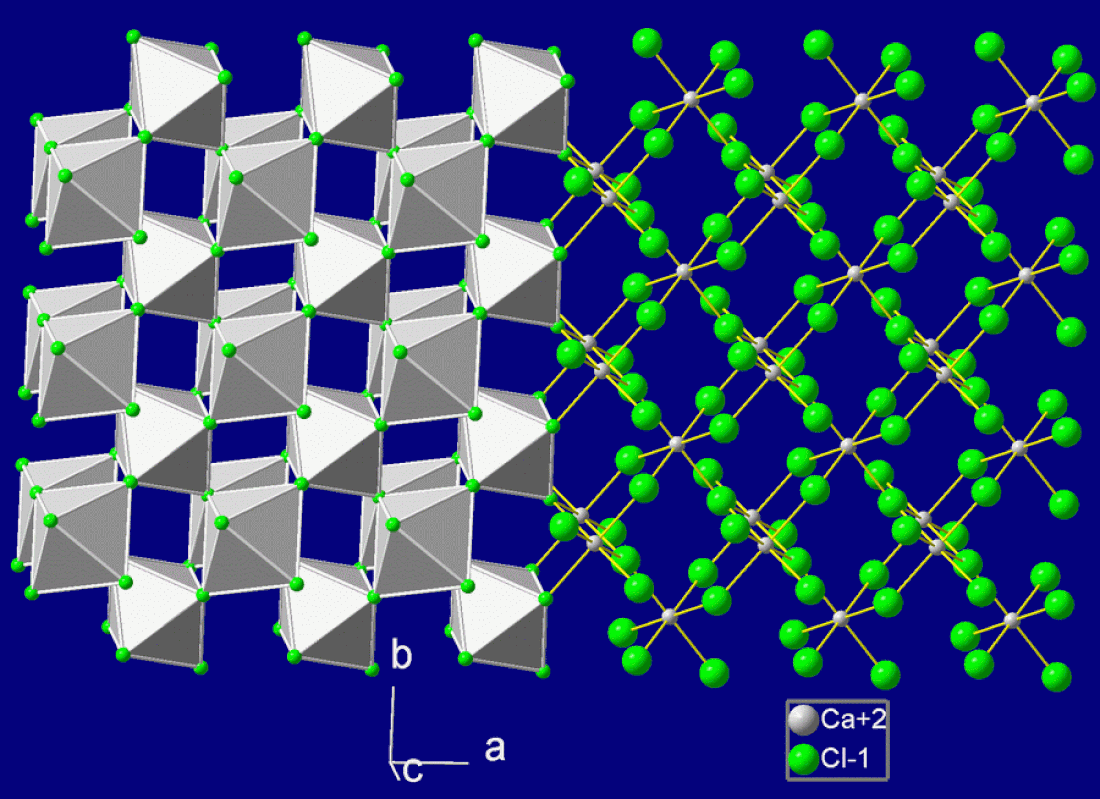Calcium bromide
Chemical compound From Wikipedia, the free encyclopedia
Calcium bromide is the name for compounds with the chemical formula CaBr2(H2O)x. Individual compounds include the anhydrous material (x = 0), the hexahydrate (x = 6), and the rare dihydrate (x = 2). All are white powders that dissolve in water, and from these solutions crystallizes the hexahydrate. The hydrated form is mainly used in some drilling fluids.[1]
 | |
| Names | |
|---|---|
| IUPAC name
Calcium bromide | |
| Other names
Calcium dibromide | |
| Identifiers | |
| |
3D model (JSmol) |
|
| ChEBI | |
| ChemSpider | |
| ECHA InfoCard | 100.029.240 |
| EC Number |
|
PubChem CID |
|
| RTECS number |
|
| UNII | |
CompTox Dashboard (EPA) |
|
| |
| |
| Properties | |
| CaBr2 | |
| Molar mass | 199.89 g/mol (anhydrous) 235.98 g/mol (dihydrate) |
| Appearance | anhydrous is hygroscopic colorless crystals sharp saline taste |
| Density | 3.353 g/cm3 |
| Melting point | 730 °C (1,350 °F; 1,000 K) |
| Boiling point | 1,815 °C (3,299 °F; 2,088 K) (anhydrous) 810 °C (dihydrate) |
| 125 g/100 mL (0 °C) 143 g/100 mL (20 °C) 312 g/100 mL (100 °C) | |
| Solubility in alcohol, acetone | soluble |
| Acidity (pKa) | 9 |
| −73.8·10−6 cm3/mol | |
| Structure | |
| rhomboid | |
| Thermochemistry | |
Heat capacity (C) |
75 J/mol K |
Std molar entropy (S⦵298) |
130 J/mol K |
Std enthalpy of formation (ΔfH⦵298) |
−647.9 kJ/mol |
Gibbs free energy (ΔfG⦵) |
−656.1 kJ/mol |
| Hazards | |
| NFPA 704 (fire diamond) | |
| Lethal dose or concentration (LD, LC): | |
LD50 (median dose) |
4100 mg/kg (rat, oral) 1580 mg/kg (mouse, subcutaneous) |
| Related compounds | |
Other anions |
Calcium fluoride Calcium chloride Calcium iodide |
Other cations |
Beryllium bromide Magnesium bromide Strontium bromide Barium bromide Radium bromide |
Except where otherwise noted, data are given for materials in their standard state (at 25 °C [77 °F], 100 kPa).
| |
Synthesis, structure, and reactions
It is produced by the reaction of calcium oxide, calcium carbonate with bromine in the presence of a reducing agent such as formic acid or formaldehyde:[1]
- CaO + Br2 + HCO2H → CaBr2 + H2O + CO2
Solid calcium bromide adopts the rutile structure, featuring octahedral Ca2+ centres bound to six bromide anions, which also bridge to other Ca2+ centres.
When strongly heated in air, calcium bromide reacts with oxygen to produce calcium oxide and bromine:
- 2 CaBr2 + O2 → 2 CaO + 2 Br2
Uses
It is mainly used as dense aqueous solutions for drilling fluids.[1] It is also used in neuroses medication, freezing mixtures, food preservatives, photography and fire retardants.[2]
It minimizes the emission of gaseous mercury in the combustion of coal.[1]
In the laboratory
Calcium bromide forms complexes with triphenylphosphine oxide, allowing for removal of triphenylphosphine oxide from reaction mixtures without the use of chromatography.[3]
References
External links
Wikiwand - on
Seamless Wikipedia browsing. On steroids.

